CASE STUDY - SLOW GROWTH IN SOLAR POWER IN AUSTRALIAN HOMES
In 2015–16 the Survey of Income and Housing (SIH) included questions about whether or not solar panels were present on dwellings. Collecting such information in the SIH allows us to look at solar panel presence against wealth and income. The data in the article below is from the 2015–16 SIH and the Household Energy Consumption Survey, 2012 (cat. no. 4670.0).
The proportion of households in Australia with solar panels present for energy and/or hot water has risen slightly from 15% in 2012 to 17% in 2015–16. The biggest increase in solar uptake over this period was a 7 percentage point increase in Queensland, with one in four homes now having solar panels installed. Both South Australia and Western Australia also had uptakes of solar panels above the national average, at 24% and 19% respectively.
SOLAR POWER BY AGE OF HOUSEHOLD REFERENCE PERSON
In both 2012 and 2015–16, older households were leading the way on solar panel ownership, which increased steadily over the life course peaking at households where the reference person was aged between 65 and 74 years. This is related to the fact that home ownership rates and net wealth increase with age.
Graph 1 - PROPORTION OF HOUSEHOLDS WITH SOLAR PANELS, by age of household reference person, 2012 to 2015-16
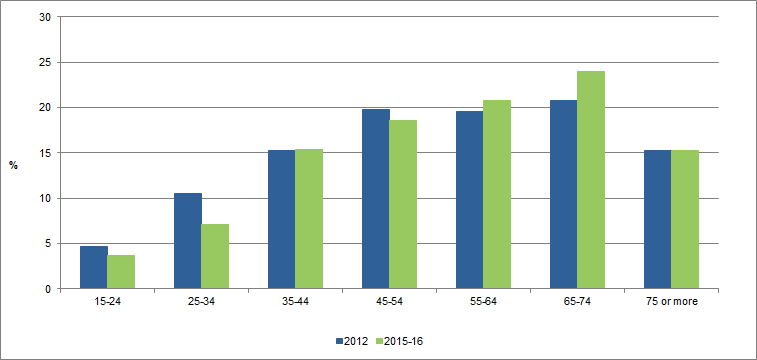
Source(s): ABS Survey of Income and Housing, 2015–16, ABS Household Energy Consumption Survey, 2012
SOLAR POWER BY TENURE TYPE
The relationship between wealth and solar panel presence is partly explained by home ownership. Home owners and mortgagees were around seven times more likely to have solar panels present in 2015–16 than renters. Home owners and mortgagees were the main contributors to the growth in solar panel presence between 2012 and 2015–16, recording an increase of 3.1 and 2.0 percentage points respectively. Increases in property values (see Changes in wealth over time), wealth has also risen much more strongly for mortgagees than renters.
More recently purchased or built dwellings (in the last 10 years) were more likely to have solar panels than those purchased less recently. However, less than 10% of first home buyers had solar panels present on their dwelling compared with 24% of other home buyers.
Graph 2 - PROPORTION OF HOUSEHOLDS WITH SOLAR PANELS, by tenure type, 2012 to 2015-16
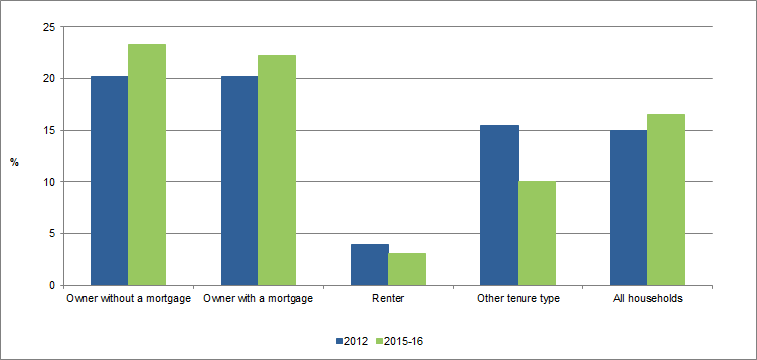
Source(s): ABS Survey of Income and Housing, 2015–16, ABS Household Energy Consumption Survey, 2012
Graph 3 - PROPORTION OF HOUSEHOLDS WITH SOLAR PANELS, by home buyer type and part of state, 2015-16
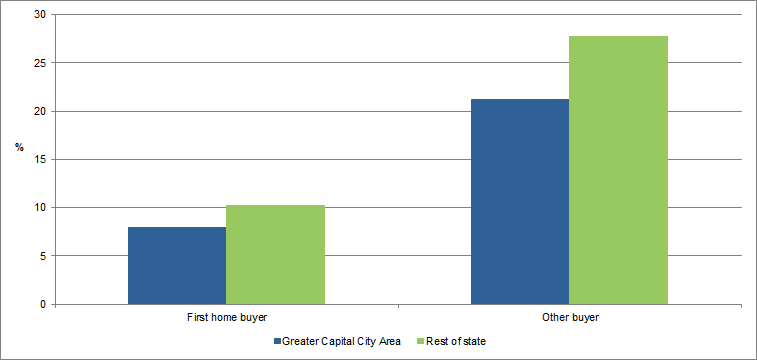
Source(s): ABS Survey of Income and Housing, 2015–16, ABS Household Energy Consumption Survey, 2012
SOLAR POWER BY DWELLING TYPE
The type of dwelling a household lives in affects the likelihood of solar panels being installed. Separate houses were more likely to have solar panels than any other housing type (20% in 2015–16).The presence of solar panels in semi-detached dwellings and apartments was much lower at 6% and 1% respectively.
Graph 4 - HOUSEHOLDS WITH SOLAR PANELS, by dwelling type, 2015-16
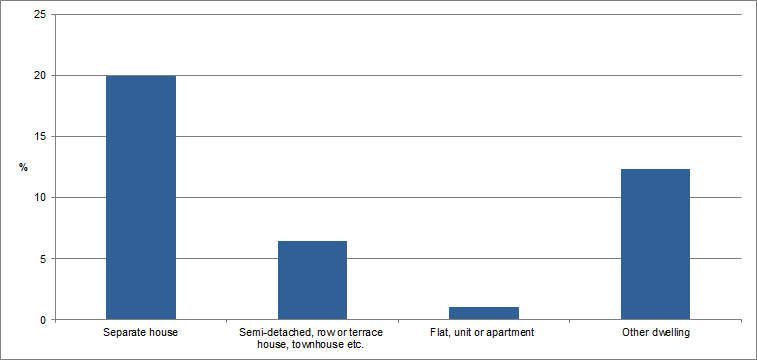
Source(s): ABS Survey of Income and Housing, 2015–16, ABS Household Energy Consumption Survey, 2012
SOLAR POWER BY INCOME AND WEALTH
The economic resources available to a household can affect the decision to install solar panels. Over one fifth (22%) of households in the highest wealth quintile had solar panels, compared with very low take-up of solar in the lowest quintile (3%). This difference is partly due to lower home ownership in low wealth households. As can be seen in Graphs 5 and 6 below, wealth (driven by home ownership) has a stronger relationship to whether or not a dwelling has solar panels than income.
Graph 5 - HOUSEHOLDS WITH SOLAR PANELS, by net worth quintiles, 2012 and 2015-16

Source(s): ABS Survey of Income and Housing, 2015–16, ABS Household Energy Consumption Survey, 2012
Graph 6 - HOUSEHOLDS WITH SOLAR PANELS, by income quintiles, 2012 and 2015-16
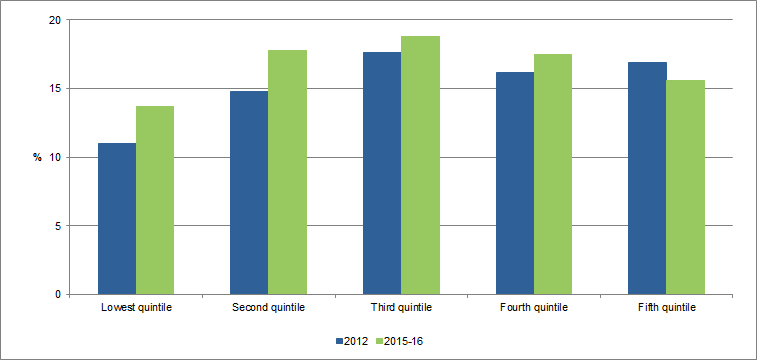
Source(s): ABS Survey of Income and Housing, 2015–16, ABS Household Energy Consumption Survey, 2012
 Print Page
Print Page
 Print All
Print All
 Quality Declaration
Quality Declaration